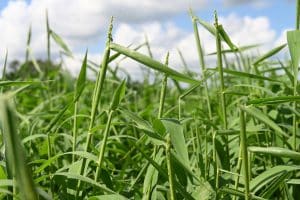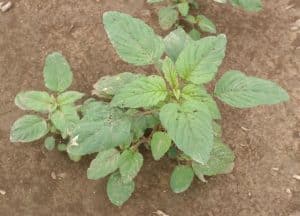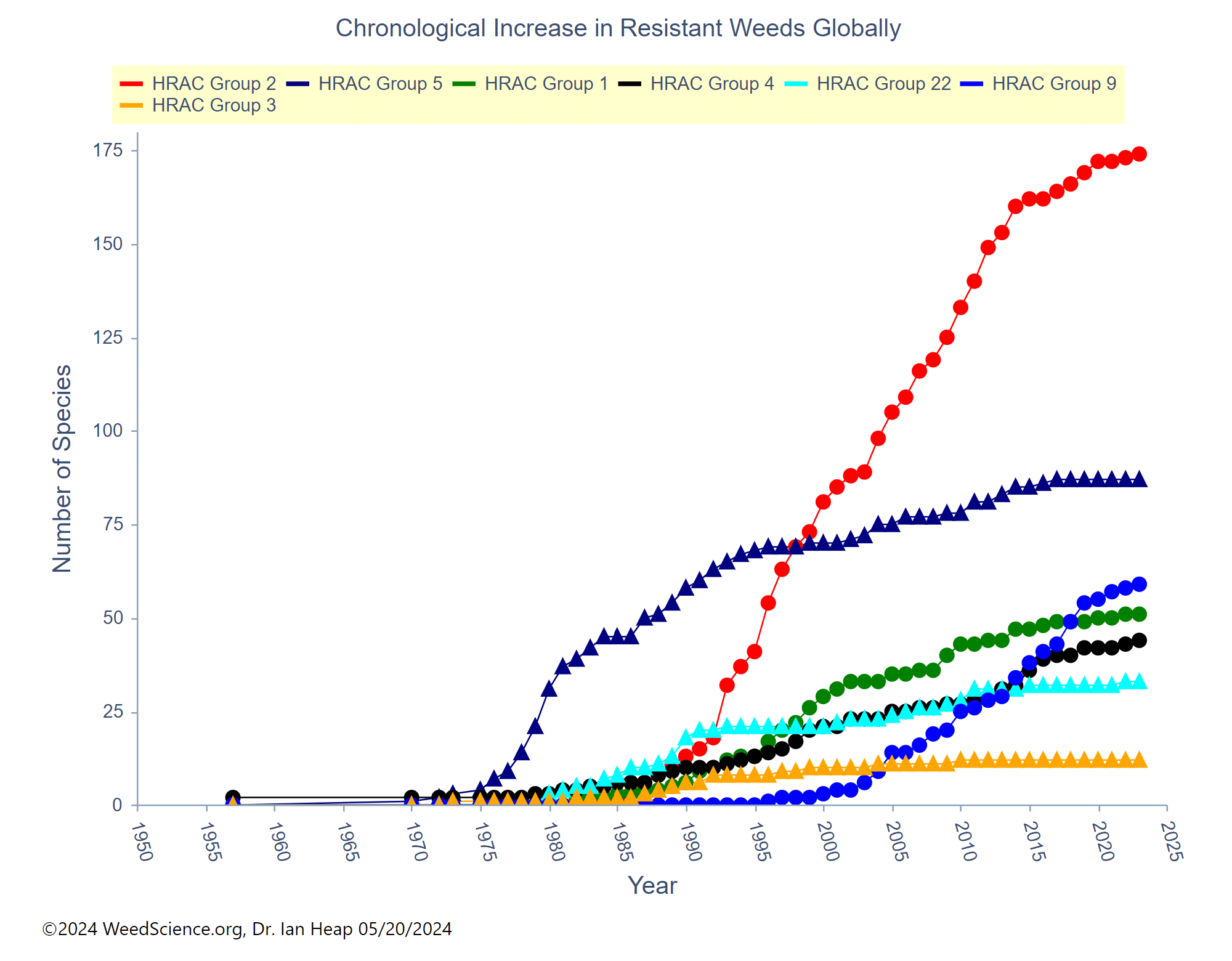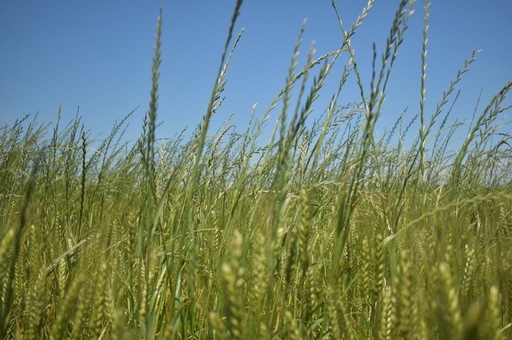Asclepias syriaca L.
Also known as butterfly flower, Virginia silkweed, silkweed, silky swallow-wort
Note: This information is based on experience in the Mid-Atlantic states; recommendations in other regions may vary.
Common milkweed is a native perennial broadleaf weed in row crops, pastures, or hay fields. It can reproduce by seed and creeping rootstocks. A tuft of hair is attached to individual seeds, aiding in wind dispersal. Thus it often forms colonies (or patches) in fields. Common milkweed is considered to have certain beneficial attributes, such as habitat for monarch butterflies.
Identifying Features
Plants originating from seeds are smaller and thinner than plants emerging from established rootstocks. Mature stems are stout, hollow, and often covered with short downy hairs. Stems often do not form branches and can grow to 5 feet in height.
Flowers are arranged in a nearly round clusters at the tip of the stems. Flowers produce an abundance of nectar that attracts bees and other flying insects.
Seeds develop in a fleshy pale green pod that are often 5-inches long and 1½ inches wide. Pods split lengthwise at maturity and release tufted seeds.
All parts of the plant excrete a milky sap when broken. Common milkweed is often confused with hemp dogbane (Apocynum cannabinum), particularly as early in the season. However, much larger leaves and a lesser degree of branching in common milkweed, help to distinguish it from hemp dogbane.
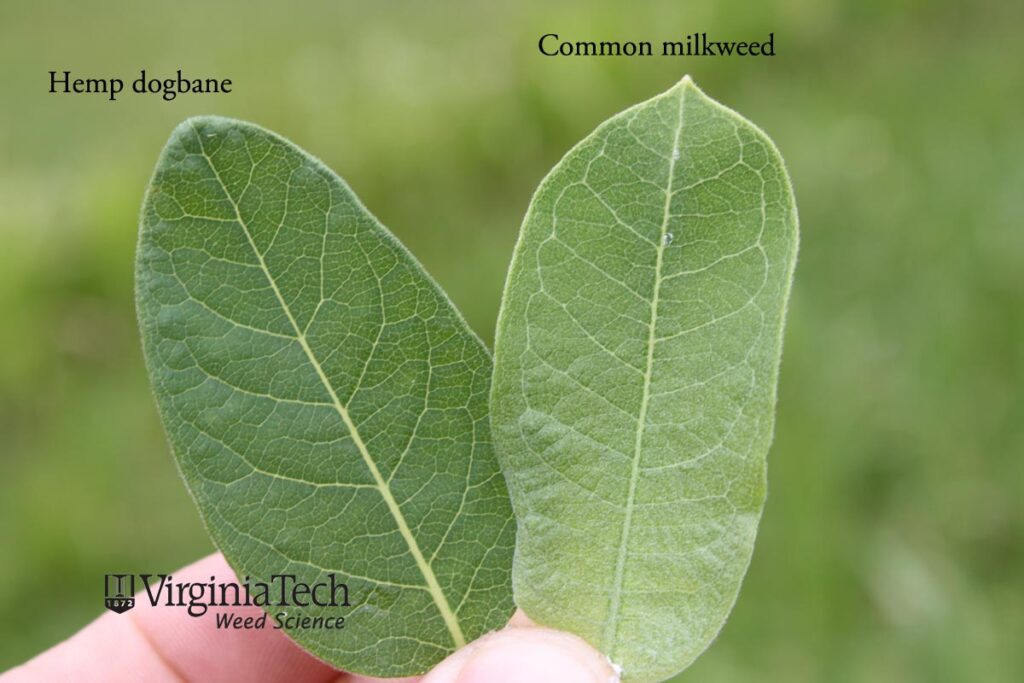
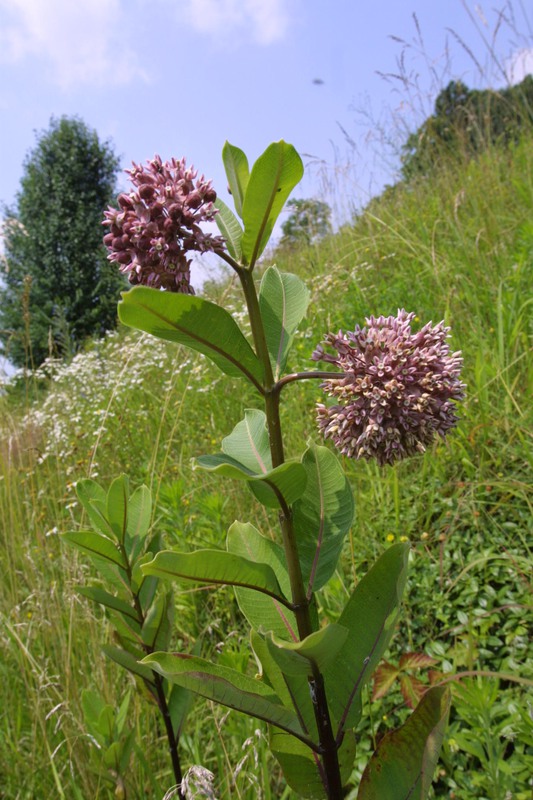
Seed Production
Seeds develop in 3 to 5 inch-long seed pods. Typically there are 40 to 6 pods per stem, but can be as many as 20 pods per stem. Seed pods are teardrop-shaped (7mm long by 5mm wide), bumpy, hairy, and gray-green; seed pods tend to grow in pairs. At maturity, pods split open, shedding up to 200 seeds each. Seeds are relatively large, oval and flat, and turn grayish brown.
Seedlings develop perennial characteristics as soon as 3 weeks after emergence. Creeping rootstock of an established plant can spread up to 10 feet in a single season.
Herbicide-Resistance
None reported.
Management
The seedlings of common milkweed germinate initially from seeds, but once the plants are established, they can emerge from adventitious buds on creeping roots. Seedlings may be selectively controlled by certain PRE herbicides, but infestations in crops typically arise from regrowth of established vegetative propagules beneath the soil, which have been reported to form within a month after seedling emergence. Mechanical control by repeated removal of top growth is possible where cultural practices allow; however, tillage is not a viable option due to fragmentation and resultant multiplication of vegetative propagules. Therefore, effective control is limited to applying selective or non-selective systemic herbicides. In general, late bud stage or early bloom stage is a good window to apply such herbicides as long as the label of the respective herbicide allows such an application timing in the particular crop. When possible, glyphosate may be spot applied between crops to manage these weeds. Adding a surfactant and liquid nitrogen or AMS can improve weed control.
Corn
The use of glyphosate in Roundup Ready corn is perhaps the most effective approach for control of milkweed in this crop. Glufosinate (Liberty) can suppress these weeds in LibertyLink crops. Selective broadleaf herbicides such as fluroxypyr (Starane Ultra) and dicamba (Banvel, Clarity) are somewhat effective in conventional corn. Tank mixtures such as diflufenzopyr plus dicamba (Distinct), prosulfuron (Peak) plus 2,4-D or dicamba, and nicosulfuron (Accent Q) plus dicamba can also provide fair control of thIs weed.
Sorghum
Herbicides such as dicamba and 2,4-D may provide fair selective control of milkweed. Herbicides such as fluroxypyr (Starane Ultra) and halosulfuron plus dicamba (Yukon) may also provide selective control of this weed in sorghum.
Soybean
Chemical control is best with glyphosate in Roundup Ready varieties. Dicamba in Xtend soybeans or 2,4-D choline in Enlist soybeans will provide a modest level of control. There are no selective herbicides to control this weed in conventional soybeans. Using a weed wiper to glyphosate by taking advantage of the height difference between the crop canopy and the weed is also an effective strategy to control this weed in conventional soybean.
Small Grains
Selective herbicides such as fluroxypyr (Starane Ultra), dicamba (Banvel/Clarity), and 2,4-D may control this weed if applied at the proper stage. Otherwise, application of glyphosate or dicamba as a harvest aid or during the same fallow season may provide better control of milkweed.
Perennial Forages
In alfalfa, the use of glyphosate in a Roundup Ready variety is perhaps the most effective approach to control milkweed. Selective herbicides labeled for alfalfa do not provide satisfactory control of established plants.
In pasture and hay fields, the herbicides picloram plus fluroxypyr (Surmount) and fluroxypyr plus triclopyr (Pasture-Gard) can provide selective control of this weed; however, sequential applications may be necessary for successful control. Sequential applications of 2,4-D plus dicamba may also provide fair control of milkweed. A weed wiper may also be used to control this weed in forage crops.
This content was presented in “Mid-Atlantic Field Crop Weed Management Guide” (2020), Penn State Ag Communications, AGRS-136

